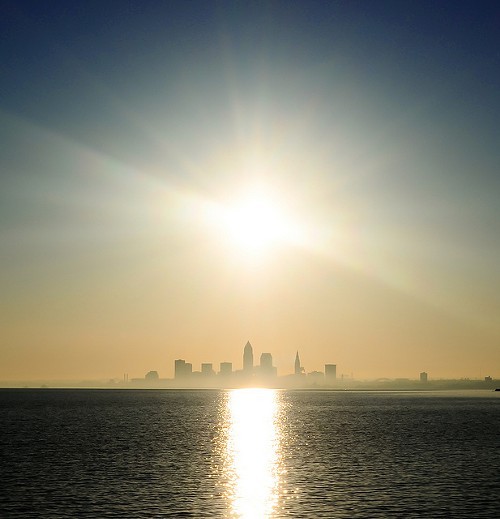One of the areas flagged for development, is “a grassy area between the Great Lakes Science Center and the Rock Hall,” for heaven’s sake. Another is the skate park north of the Rock Hall. While it seems like the city is finally tapping the gas to get this lakefront biz going, the plan as written just flies in the face of conventional wisdom w/r/t development along the water (a la Chicago’s parks, San Francisco’s waterfront, etc.) Such wisdom intimates that the whole swath of lakefront land in Cleveland should be treated as a singular asset with a much broader and livelier vision in place.
There’s all this talk from developer Cumberland TCC LCC of installing 1,000 residential apartments, perhaps a hotel, maybe a school, a huge concessions stand with, like, a Blue Point Grille-esque restaurant on top of it - all crammed onto 21 segmented acres of downtown land. Meanwhile, beautiful Burke Lakefront Airport and its more than 300 acres of important land continue to rot, and oddities like the Cleveland Public Power building maintain a primo vigil just down the road.
What all of this represents is, inevitably, a type of neighborhood-manufacturing project (similar in some ways to the Flats East Bank palace currently under way). The “lakefront development” moniker is a misnomer at best. Local reporters are also quick to dub this current thing “one of Mayor Frank Jackson’s legacy projects,” which just seems depressing for the guy when you consider the scope of what’s going on here.
This isn’t to be all negative about what should be a glorious moment - “the city is goddam DOING something with the lakefront!” Rather, this all comes off like a tip of the hat toward Cleveland’s well documented and inept stewardship of public land.
Here’s some context from a Nov. 18, 2001, Plain Dealer article by Steven Litt:
“[U]nlike other cities, Cleveland has been slow to learn that waterfronts could be powerful economic magnets, with the potential to attract the young, talented and innovative workers who are stoking the economies of livelier regions elsewhere...And there's little evidence that Cleveland's leaders understand the fundamentals of great waterfronts: That they are built around parks and public spaces - not simply tourist attractions - and that the water itself is always the greatest attraction.”
On paper, the intent of this latest plan is nice for a certain population of downtown Cleveland. But the stuff Litt was writing about - with a disheartened tone even 13 years ago - is still lingering in the air here. Cleveland would do well to fire a few more broken synapses and think bigger.


